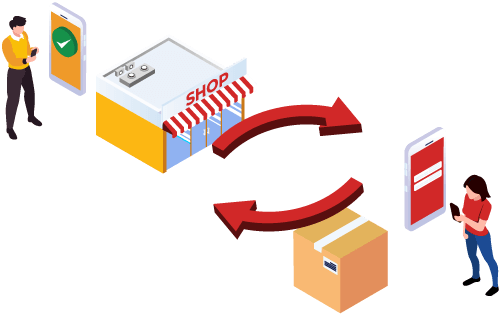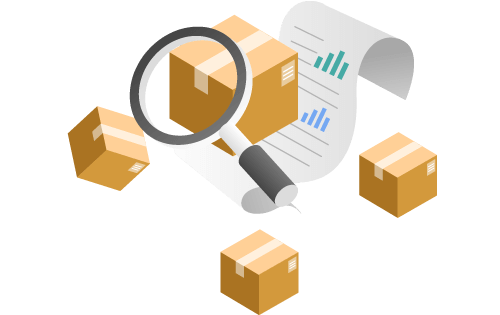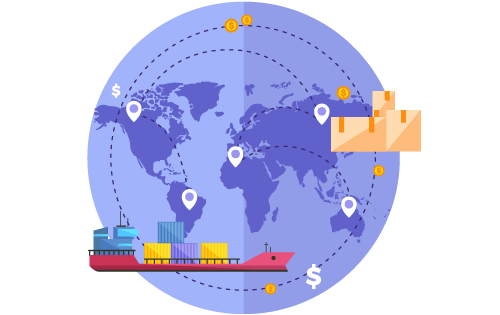Managing Returns with RMAs
Built For



Managing Returns with RMAs
Handling returns efficiently and effectively is critical. However, managing returns can sometimes feel overwhelming, but there’s a tool that makes it much easier: RMAs or Return Merchandise Authorizations. Let’s explore how RMAs work and why they’re essential for streamlining your return process.
What is an RMA?
An RMA is a system process that authorizes and tracks the return of products from customers to the business. Whether a product is damaged, defective, or simply unwanted, an RMA helps organize the return process by issuing a unique tracking number to the customer. This number links the returned product to its original order, making it easy to process the return quickly and accurately.
Whenever a customer wants to return an item, the business issues an RMA number, giving clear instructions on how to send the product back, helping both parties stay avoid confusion. It also simplifies inventory management because businesses know exactly what is being returned and when.
The RMA Process: Step-by-Step

- Initiating the Return Request: The process begins when a customer contacts the business to return an item. They’ll typically complete a return request form online or contact customer service.
- RMA Approval and Documentation: RMA approval means the business agrees to the return request, provides the customer with a unique RMA number, and provides instructions on how to send the product back. This documentation may also include a pre-printed shipping label.
- Product Return: The customer ships the product back using the RMA number to track the return. This number ensures that the business can easily find the original purchase details.
- Inspection and Evaluation: Once the product arrives, the business inspects it to ensure it meets the return policy requirements. Depending on the product’s condition, it may be restocked, repaired, or discarded.
- Finalizing the Return: After the inspection, the business processes the refund, replacement, or repair. Customers are notified about the status of their return, and the process is closed.
Benefits of Using RMAs for Return Management
Why should you care about RMAs? The answer is simple: they make the return process easier and more organized.
- Improved Organization and Tracking: RMAs assign a specific number to each return, making tracking what’s coming back easy. This prevents lost returns and keeps everything organized.
- Enhanced Communication: Customers appreciate clear instructions and updates during the return process. RMAs offer that level of communication, ensuring customers know exactly what to expect.
- Fewer Errors: RMAs minimize errors like incorrect refunds or lost products by linking each return to its original purchase.
- Better Inventory Control: RMAs help businesses track returned items more efficiently, reducing the chances of stock discrepancies and helping manage inventory more accurately.
How RMAs Improve Customer Satisfaction

A smooth return process goes a long way in keeping customers happy. RMAs contribute to this by offering transparency and simplicity. Customers want to know that their return is handled quickly and fairly, and RMAs provide just that.
When customers can easily request a return, follow clear instructions, and track the status of their return, they’re more likely to trust the business and come back for future purchases. Faster processing times and easy communication lead to a more satisfying return experience, reinforcing customer loyalty.
Using Inventory and Order Management Software to Manage RMAs
Inventory and order management software automates much of the RMA process, saving time and reducing errors. From the moment an RMA is issued, the inventory system automatically updates customer records and tracks the return status. This real-time visibility benefits both the business and the customer by knowing where the return is in the process.
Best Practices for RMA Management
To make the most of RMAs, here are a few best practices:
- Clear Return Policy: Your return policy should be easy to understand. Customers should know what’s eligible for returns and the steps they must follow.
- Easy RMA Requests: Implement a user-friendly RMA process. The simpler it is, the fewer questions and issues your support team will face.
- Continuous Improvement: Review your RMA process regularly to identify bottlenecks. You can typically find ways to make returns faster or more efficient.
- Train Your Team: Ensure your warehouse and customer service teams understand how to handle RMAs effectively. This will ensure everyone follows the same process, reducing mistakes and delays.
Common Challenges in Managing Returns with RMAs

Even with RMAs, there are still some common challenges to be aware of:
- Miscommunication with Customers: Customers might need help understanding the return process or failing to follow instructions. Clear communication is vital to avoiding confusion.
- Delays in Processing: Bottlenecks in approving RMAs or inspecting returned products can slow down the whole process, frustrating customers.
- Fraudulent Returns: Fraudulent returns, like returning used or damaged products, can be an issue. Businesses need clear policies and inspection processes to handle this effectively.
- Return Costs: Returns can be expensive, from shipping to lost inventory. Monitoring return rates and optimizing the process can help mitigate these costs.
Managing returns with RMAs keeps things organized and improves customer satisfaction by making the process easy and transparent. By using RMAs, businesses can avoid common pitfalls of manual returns, like lost items or incorrect refunds, while creating a smoother customer experience. Combined with inventory management software, RMAs are a powerful tool for streamlining your return process and keeping customers happy.
Call us at 817-870-1311





